Njal's Saga Read online
NJAL’S SAGA
Born and raised in Bethlehem, Pennsylvania, Robert Cook was educated at Princeton, Zurich and Johns Hopkins and taught English medieval literature at Tulane University in New Orleans for twenty-seven years. In 1990 he moved to Reykjavík to serve as Professor of English Literature at the University of Iceland. He has published on English medieval literature and on the Icelandic sagas, and together with Mattias Tveitane edited Strengleikar (1979), an Old Norse translation of twenty-one medieval French lais.
WORLD OF THE SAGAS
Editor Örnolftir Thorsson
Assistant Editor Bernard Scudder
Advisory Editorial Board:
Theodore M. Andersson Stanford University
Robert Cook University of Iceland
Terry Gunnell University of Iceland
FredrikJ. Heinemann University of Essen
Viðar Hreinsson Reykjavik Academy
Robert Kellogg University of Virginia
Jónas Kristjánsson University of Iceland
Keneva Kunz Reykjavik
Vésteinn Ólason University of Iceland
Gísli Sigurðsson University of Iceland
Andrew Wawn University of Leeds
Diana Whaley University of Newcastle
NJAL’S SAGA
Translated with Introduction and Notes by
ROBERT COOK
PENGUIN BOOKS
PENGUIN BOOKS
Published by the Penguin Group
Penguin Books Ltd, 80 Strand, London WC2R ORL, England
Penguin Putnam Inc.,375 Hudson Street, New York, New York 10014, US A
Penguin Books Australia Ltd, 250 Camberwell Road, Camberwell, Victoria 3124, Australia
Penguin Books Canada Ltd, 10 Alcorn Avenue, Toronto, Ontario, Canada M4v 3B2
Penguin Books India (P) Ltd, 11, Community Centre, Panchsheel Park, New Delhi – 110 017, India
Penguin Books (NZ) Ltd, Private Bag 102902, NSMC, Auckland, New Zealand
Penguin Books (South Africa) (Pty) Ltd, 24 Sturdee Avenue, Rosebank 2196, South Africa
Penguin Books Ltd, Registered Offices: 80 Strand, London WC2R ORL, England
This translation first published in The Complete Sagas of Icelanders (Including 49 Tales) III, edited by Viðar Hreinsson (General editor), Robert Cook, Terry Gunnell, Keneva Kunz and Bernard Scudder Leifur Eiríksson Publishing Ltd, Iceland 1997
First published in Penguin Classics 2001
1
Translation copyright © Leifur Eiríksson Publishing Ltd, 1997
Introduction and Notes copyright © Robert Cook, 2001
All rights reserved
The moral rights of the translator have been asserted
Leifur Eiríksson Publishing Ltd gratefully acknowledges the support of the Nordic Cultural Fund,
Ariane Programme of the European Union, UNESCO and others.
Except in the United States of America, this book is sold subject to the condition that it shall not, by way of trade or otherwise, be lent, re-sold, hired out, or otherwise circulated without the publisher’s prior consent in any form of binding or cover other than that in which it is published and without a similar condition including this condition being imposed on the subsequent purchaser
ISBN: 9781101488263
Contents
Acknowledgements
Introduction
Further Reading
A Note on the Translation
Chronology of Njal’s Saga
Njal’s Saga
Notes
Plot Summary
Maps
Family Trees
Glossary
Index of Characters
Acknowledgements
Special thanks are due to Sverrir Tómasson and other learned scholars at the ÁRNi Magnúisson Institute in Reykjavík, to Icelandair, to Professor Jón Friðónsson of the University of Iceland, to Guðrún Ingólfsdóttir, and to my copy-editor, Elizabeth Stratford. So many others have helped me in one way or another that in mentioning the following I beg indulgence from those I may have temporarily overlooked: Carol Clover, Gerda Cook-Bodegom, Helle Degnbol, Susanne Eisner-Kartagener, Davið Erlingsson, Henry Frey Galina Glazyrina, Terry Gunnell, Fritz Heinemann, Viðar Hreinsson, Ármann Jakobsson, Örnolfur Thorsson prepared the maps, genealogies and glossary, and Jón Torfson the index of characters. Bernard Scudder, Robert Kellogg, Helga Kress, William I. Miller, Hermann Pálsson, John Porter, Christopher Sanders, Marianne Kalinke, Andrew Wawn and Yelena Olegovna Yershova.
Introduction
Njal’s Saga is by far the longest of the forty family sagas written in Iceland in the thirteenth and fourteenth centuries, and over the years it has proved to be the favourite. The saga teems with life and action, with memorable and complex characters from the heroic Gunnar of Hlidarendi, a warrior without equal who dislikes killing, to the villainous, insinuating Mord Valgardsson, who turns out to be less dastardly than we first expect. Unforgettable events include Skarphedin’s head-splitting axe blow as he glides past his opponent on an icy river bank, or Hildigunn’s provoking of her uncle to seek blood revenge by placing on his shoulders the blood-clotted cloak in which her husband was slain. In Njal’s Saga we read of battles on land and sea, failed marriages, divided allegiances, struggles for power, sexual gibes, malicious backbiting, revenge, counter-revenge, complex legal processes and peace settlements that fail to bring peace, not to mention dreams, portents, prophecies, a witch-ride and valkyries. Behind all this richness lies a well-crafted story of decent men and women struggling unsuccessfully to control a tragic force propelled by persons of lesser stature but greater ill-will. Just as in the Norse poem Völuspá (‘The Seeress’s Prophecy’) the gods met their doom (no mere twilight) at the hands of brute giants and monsters, after which a new and peaceful earth arose, so do the terrible events of Njal’s Saga lead finally and at great cost to a dignified resolution bearing the promise of a better time.
BACKGROUND
From the time they adopted the Latin alphabet in the eleventh century, the Icelanders have been prodigious writers and record keepers. Among the many genres that have been preserved is a group of annals, begun around the year 1200, most of which contain, usually under the year 1010, the simple entry ‘Nials brenna’ (the burning of Njal). Another work, which dates back to the twelfth century, The Book of Settlements,* a detailed account of the people who settled Iceland in the late ninth century, reports this about a man named Thorgeir: ‘His son was Njal, who was burned to death in his house.’ Some versions of The Book of Settlements add ‘at Bergthorshvol’ and the number of men (varying from seven to nine) who were burned to death. Snorri Sturluson, the great thirteenth-century writer and man of affairs, ascribes a half-stanza in his Edda to ‘Brennu-Njáll’ (Njal of the burning) and The Saga of Gunnlaug Serpent-tongue reports that the general assembly held after the burning of Njal ‘was one of the three most heavily attended Althings of all time’.
Thus a number of sources which pre-date Njal’s Saga, in several of the genres of medieval Icelandic literature, testify to the fact that around the year 1010 the buildings at a farm named Bergthorshvol in the south of Iceland, on a marshy area dotted with hillocks and bordering the ocean, were set on fire and burned. Inside were the farmer, a man named Njal Thorgeirsson, and some others. The references to this burning make it one of the best documented events of the so-called ‘saga age’ in Iceland (930–1030), and there is no reason to question it as historical fact.
Another prominent event in Njal’s Saga (or Njála, to use its popular nickname) is supported by external sources. A stanza in the twelfth-century poem Íslendingadrápa by Haukur Valdísarson records that a man named Gunnar defended himself against an attack by a certain Gizur, and managed to wound sixteen men and kill two.
This event is also mentioned in The Saga of the People of Eyri and in The Book ofSettlements, and it seems safe to conclude that this too was a historical fact.
These two events, the attack on Gunnar at Hlidarendi and the burning of Njal at Bergthorshvol, constitute the two principal climaxes of Njal’s Saga. There is a huge gap, however, between the bare saga-age events and their elaboration in the prose masterpiece we have before us, written around 1280. As with the Homeric epics and the Song of Roland, well-remembered historical events were passed down through several centuries of oral tradition and finally shaped by the hand of a master story-teller and writer into a non-historical work of art. The author of Njal’s Saga was not trying to write history, but to create his own dramatic fiction, using events and persons known to him but going far beyond them with his own inventions and interpretations. There was a man named Njal who was burned to death in his home around the year 1010, and a man named Gunnar who was killed by men who attacked his home around 992 – but they are not the Njal and Gunnar of the thirteenth-century Njal’s Saga.
In Icelandic the word ‘saga’ means both ‘history’ and ‘story’, and if Njal’s Saga represents inspired story more than remembered history, it does not exist in isolation, is not a beginning or an end in itself. It is the longest, among the latest, and arguably the best of a group of forty sagas written anonymously in Iceland in the thirteenth and fourteenth centuries about people who lived there in the tenth and eleventh centuries. Among these ‘Sagas of Icelanders’ (also known as ‘family sagas’) there is a remarkable consistency, owing largely to the long period of oral transmission. For one thing, many characters overlap from saga to saga, and are mentioned as well in The Book of Settlements. The family of Hoskuld Dala-Kolsson, introduced in the first chapter of Njal’s Saga and prominent in the first half of the saga, is the principal family in The Saga of the People of Laxardal. The lawspeaker Skafti Thoroddsson (first introduced in Ch. 56) appears in other family sagas as well as in historical works, as does Thorgeir the Godi of Ljosavatn, who played a key role in the adoption of Christianity. Many other characters in Njal’s Saga are known from other Sagas of Icelanders, including rulers of Scandinavia like Harald Grey-cloak, Hakon Sigurdarson and Olaf Tryggvason of Norway, and Earl Sigurd Hlodvisson of Orkney. The multiple appearance of characters is so common in early Icelandic literature that the notes to this tradition occasionally record that a certain character, for example, Gunnar’s brother Kolskegg, does not appear in other sources. This may seem gratuitous information, and it is certainly no guarantee that the character is non-historical, but in some cases it may suggest that a person has been deliberately invented, either in the process of oral re-telling or by the late thirteenth-century author.
A second way in which the Sagas of Icelanders display consistency is their use of a common body of narrative motifs. Scandinavian kings and earls appear frequently because it is de rigueur for a promising young Icelander to establish his credentials by visiting foreign rulers and making a favourable impression on them, whether by composing a poem of praise or excelling in games or defeating the king’s enemies. The triumphant journeys abroad of Hrut (Chs. 2–6) and Gunnar (Chs. 29–32) are two among many such in the corpus. Other motifs common to Njal’s Saga and other Sagas of Icelanders are the refusal to sell (as in Ch. 47), the horse fight, the broken shoelace, quests for support, dissemination of important information by itinerant women or other unnamed characters, the use of spies, and, last but not least, the goading woman who incites a man, usually a kinsman, to take blood vengeance for a slight to the family’s honour. Such common motifs, together with the time and place (Iceland in the tenth to eleventh centuries), the subject matter (primarily feuds and their resolution), character types, standardized descriptions of battles and feasts, common thematic concerns and the general social setting, make the Sagas of Icelanders a homogeneous literary genre.
The social setting is so consistently presented that we can think of it as a third major defining feature of the Sagas of Icelanders. Recent saga scholarship with an anthropological and sociological focus has in fact demonstrated that although the sagas are not to be trusted as history in the narrow sense (names, dates, events), they provide a remarkably coherent picture of an intricate legal and social system, one which saw little change over the three centuries of the commonwealth (960–1262). For this kind of history – dealing with matters such as the organization of a hierarchical society, the arranging of marriages and divorces, the obligations within the kin group with respect to feuds, and the handling of disputes (whether by the courts or by personal arrangement) – the sagas represent a large body of shared material so consistently that it cannot have been invented by any individual author. For details of the social setting see the Glossary, especially under ‘Althing’, ‘Fifth Court’, ‘full outlawry’, ‘godi’ and ‘Lawspeaker’.
A fourth way in which the Sagas of Icelanders form a generic whole is their firm setting in historical time and their unified view of Iceland’s evolving past. Many sagas – though not Njal’s Saga – begin by mentioning the reign of Harald Fair-hair (r. 870–930), the first king to bring all of Norway under his control. The Saga of Hrafnkel Frey’s Godi, for example, begins: ‘It was in the days of King Harald Fair-hair …that a man named Hallfred brought his ship to Breiddal in Iceland, below the district of Fljotsdal.’ The common explanation in the sagas for the emigration of prominent families from the west coast of Norway is the desire to escape Harald’s harsh rule, although in fact other reasons, such as over-population, were just as likely. Many of those who left Norway stopped first in Celtic territories in Britain and later brought women and slaves out to Iceland, so that the population was not pure Scandinavian. The flight from Norway led to the ‘land-taking’ or settlement of Iceland, an island previously uninhabited except for a few Irish monks, who soon left when they saw themselves deprived of the solitude that had drawn them there. It is reckoned that by the year 930 the population of the new land had reached at least 20,000.
In addition to this foundation story of flight and settlement, the historical awareness of the thirteenth-century Icelander would have included the importation of laws from Norway by a man named Ulfljot and the establishment of the Althing (general annual meeting), both around the year 930; a refinement of the laws by a division of the country into four quarters, around 965; the acceptance of Christianity at the Althing in 999 or 1000; and the establishment of the Fifth Court in the year 1004. All of these facts, from Harald Fair-hair to the Fifth Court and beyond, were set down around 1125 in a concise book by Ari Thorgilsson known as The Book of theIcelanders. Not every Icelander in the thirteenth century had a copy of Ari’s book, or knew the precise dates and details just outlined, but it is clear that the family sagas were written for an audience possessed of a lively knowledge of the historical development of their country and its institutions.
Njal’s Saga does not mention the flight from Harald Fair-hair, but it embodies the historical legend by including two of the principal events – the Conversion (Chs. 100–105) and the establishment of the Fifth Court (Ch. 97) – and by incorporating, as do most of the family sagas, the detailed genealogies common to the genre of historical writings. Ari Thorgilsson mentions an earlier, expanded version of his short book, which contained ‘Genealogies and Lives of the Kings’, and there is other evidence that written genealogies were among the earliest secular writings in Iceland. Whether written or simply preserved in oral family tradition, a knowledge of one’s ancestors and of the kinship relations of prominent figures was built into the consciousness of every Icelander. Njála begins by mentioning Mord Gigja and his father Sighvat the Red (his grandfather, according to The Book of Settlements). The next person introduced is Hoskuld Dala-Kolsson, and his line is traced back through his mother to a prominent female settler in the west of Iceland, Unn the Deep-minded. The text does not specify that Sighvat and Unn were settlers – this is not necessary, for the audience of the saga would have known this.
Genealogies usually appear in the sagas when a character is introduced, often in combination with an insightful description.
Tracing of family lines goes forward as well as backward. The twelfth-century Icelandic historian, Saemund Sigfusson the Learned, is mentioned in Njal’s Saga as a descendant of Ulf Aur-godi (Ch. 25) and also of Sigfus Ellida-Grimsson (Ch. 26). Gizur the White’s son Isleif, mentioned in Ch. 46, became the first bishop of Iceland in 1056, and the audience would have known that Isleif’s son was the influential Bishop Gizur who introduced the tithe to Iceland. In the fullest genealogy in the saga, that given for Gudmund the Powerful in Ch. 113, his line is traced not only to Bishop Ketil (d. 1145) but to the prominent thirteenth-century families of the Sturlungs and the people of Hvamm. The abundant genealogies, not to mention the abundance of characters, must have made Njála a rich shared experience for thirteenth-century Icelanders, most of whom could trace their ancestry back to at least one of the four hundred settlers and to other persons named in this and other sagas.
In this sense, the modern reader – unless he is an Icelander who can trace his lineage for a thousand years (as many can) – is an outsider, unable to share fully in the personal excitement of reading about one’s family past and one’s national past. There is no disadvantage, however, if the reader is prepared to understand sympathetically the historical background just described and what it must have meant to the men and women who wrote and read or listened to these sagas in the thirteenth and fourteenth centuries. It is well documented that the thirteenth century in Iceland was an ugly and troubled time, virtually a period of civil war, with large-scale battles, with power falling into fewer and fewer hands (instead of being distributed among the thirty-nine godis) and with interference from Norway in both secular and ecclesiastical affairs. The resolution of this turmoil was submission to Norwegian rule in the year 1262, and it was seven centuries before the Icelanders became an independent nation again, in 1944. Whether written before 1262 or after (like Njal’s Saga), the sagas were written partly out of a need to affirm identity, both personal and national, with the past, a time when their ancestors fled Norwegian tyranny – rather than succumb to it – and built up a new society free of monarchical rule and governed by laws and institutions that functioned with dignity, if not without bloodshed.

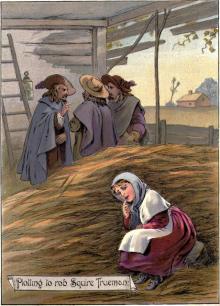 Goody Two-Shoes
Goody Two-Shoes The Pearl Box
The Pearl Box And when you gone...
And when you gone... Stranger At The Other Corner
Stranger At The Other Corner My Young Days
My Young Days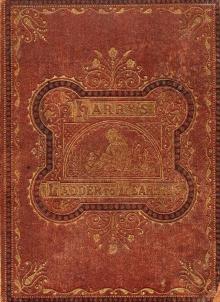 Harry's Ladder to Learning
Harry's Ladder to Learning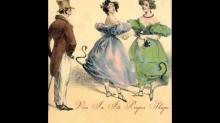 Vice in its Proper Shape
Vice in its Proper Shape_preview.jpg) Promise (the curse)
Promise (the curse)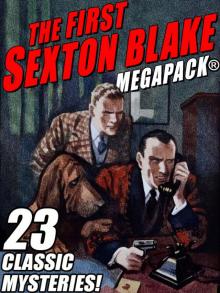 The First Sexton Blake
The First Sexton Blake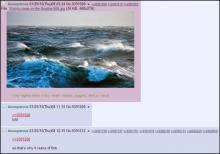 Golden Moments
Golden Moments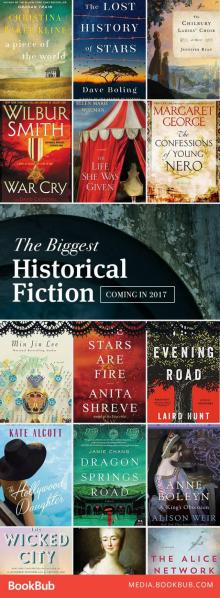 Hildebrand; or, The Days of Queen Elizabeth, An Historic Romance, Vol. 2 of 3
Hildebrand; or, The Days of Queen Elizabeth, An Historic Romance, Vol. 2 of 3 The Ice Queen
The Ice Queen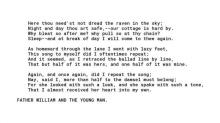 Phebe, the Blackberry Girl
Phebe, the Blackberry Girl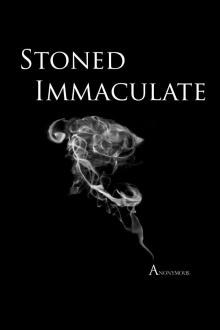 Stoned Immaculate
Stoned Immaculate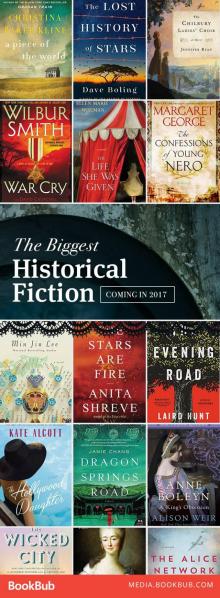 Hildebrand; or, The Days of Queen Elizabeth, An Historic Romance, Vol. 3 of 3
Hildebrand; or, The Days of Queen Elizabeth, An Historic Romance, Vol. 3 of 3 The Wonder of War on Land
The Wonder of War on Land Breaking Bailey
Breaking Bailey The Little Girl Who Was Taught by Experience
The Little Girl Who Was Taught by Experience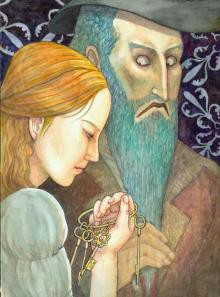 The Popular Story of Blue Beard
The Popular Story of Blue Beard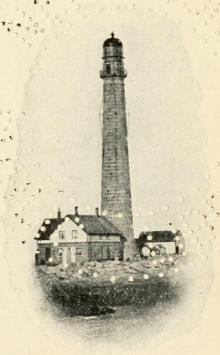 The Life Savers: A story of the United States life-saving service
The Life Savers: A story of the United States life-saving service Eunuchs and Nymphomaniacs
Eunuchs and Nymphomaniacs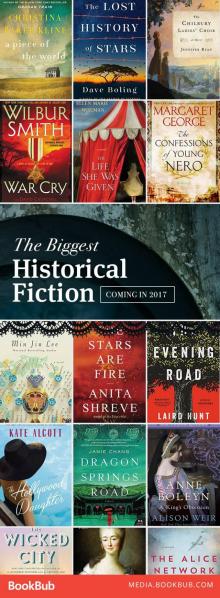 Hildebrand; or, The Days of Queen Elizabeth, An Historic Romance, Vol. 1 of 3
Hildebrand; or, The Days of Queen Elizabeth, An Historic Romance, Vol. 1 of 3 Kitty's Picnic, and Other Stories
Kitty's Picnic, and Other Stories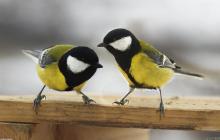 Two Yellow-Birds
Two Yellow-Birds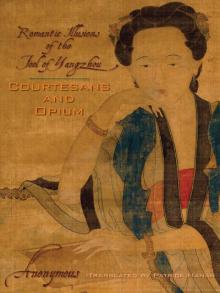 Courtesans and Opium
Courtesans and Opium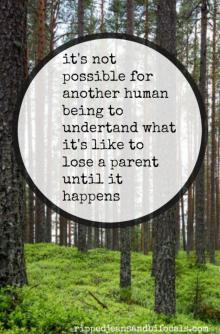 The Emigrant's Lost Son; or, Life Alone in the Forest
The Emigrant's Lost Son; or, Life Alone in the Forest Toots and His Friends
Toots and His Friends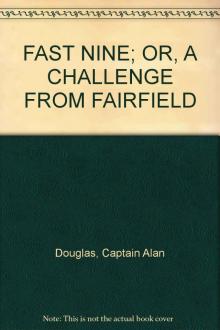 Fast Nine; or, A Challenge from Fairfield
Fast Nine; or, A Challenge from Fairfield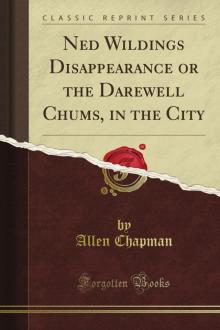 Ned Wilding's Disappearance; or, The Darewell Chums in the City
Ned Wilding's Disappearance; or, The Darewell Chums in the City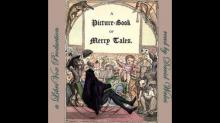 A Picture-book of Merry Tales
A Picture-book of Merry Tales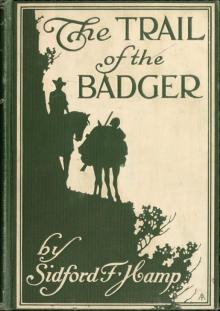 The Trail of The Badger: A Story of the Colorado Border Thirty Years Ago
The Trail of The Badger: A Story of the Colorado Border Thirty Years Ago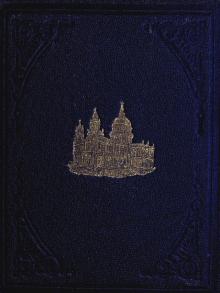 Peter Parley's Visit to London, During the Coronation of Queen Victoria
Peter Parley's Visit to London, During the Coronation of Queen Victoria The Rainbow, After the Thunder-Storm
The Rainbow, After the Thunder-Storm Arthur Hamilton, and His Dog
Arthur Hamilton, and His Dog The Story of the White-Rock Cove
The Story of the White-Rock Cove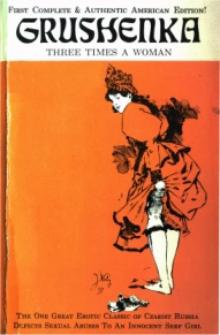 Grushenka. Three Times a Woman
Grushenka. Three Times a Woman Adventures of a Squirrel, Supposed to be Related by Himself
Adventures of a Squirrel, Supposed to be Related by Himself Falling in Love...Again
Falling in Love...Again The Colossal Camera Calamity
The Colossal Camera Calamity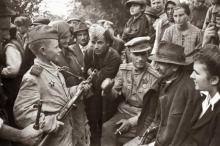 Child of the Regiment
Child of the Regiment Elimination Night
Elimination Night The Kingfisher Secret
The Kingfisher Secret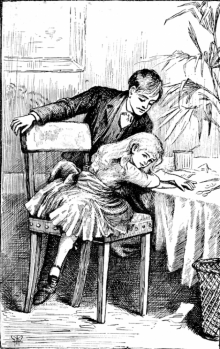 Left to Ourselves; or, John Headley's Promise.
Left to Ourselves; or, John Headley's Promise. The Island of Gold: A Sailor's Yarn
The Island of Gold: A Sailor's Yarn Adventures of Bobby Orde
Adventures of Bobby Orde Twain, Mark: Selected Obituaries
Twain, Mark: Selected Obituaries When Love Goes Bad
When Love Goes Bad The Incest Diary
The Incest Diary Calling Maggie May
Calling Maggie May The Infidelity Diaries
The Infidelity Diaries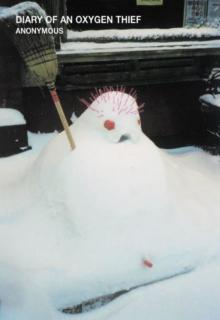 Diary of an Oxygen Thief (The Oxygen Thief Diaries)
Diary of an Oxygen Thief (The Oxygen Thief Diaries)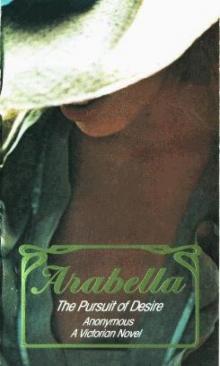 ARABELLA
ARABELLA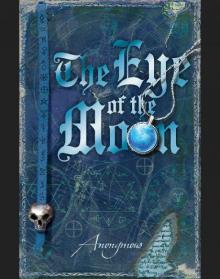 The Eye of the Moon
The Eye of the Moon Dara
Dara THE ALTAR OF VENUS: The Making of a Victorian Rake
THE ALTAR OF VENUS: The Making of a Victorian Rake The Book of Death
The Book of Death The Book of David
The Book of David The Devil's Graveyard
The Devil's Graveyard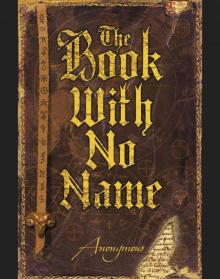 The Book With No Name
The Book With No Name I Am A Lesbian
I Am A Lesbian Njal's Saga
Njal's Saga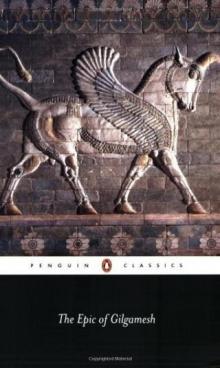 The Epic of Gilgamesh
The Epic of Gilgamesh Darling
Darling Tal, a conversation with an alien
Tal, a conversation with an alien Go Ask Alice
Go Ask Alice Aphrodizzia
Aphrodizzia The Campus Trilogy
The Campus Trilogy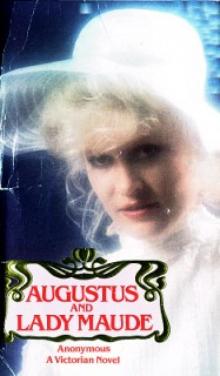 Augustus and Lady Maude
Augustus and Lady Maude Lucy in the Sky
Lucy in the Sky Sight Unseen
Sight Unseen Pleasures and Follies
Pleasures and Follies The Red Mohawk
The Red Mohawk A Fucked Up Life in Books
A Fucked Up Life in Books Chameleon On a Kaleidoscope (The Oxygen Thief Diaries)
Chameleon On a Kaleidoscope (The Oxygen Thief Diaries)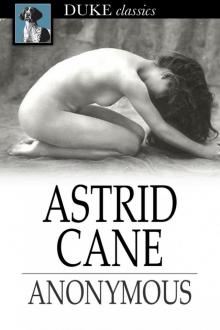 Astrid Cane
Astrid Cane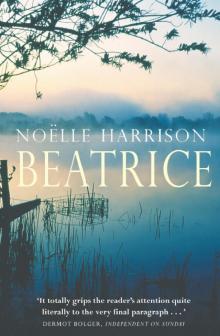 BEATRICE
BEATRICE The Song of the Cid
The Song of the Cid